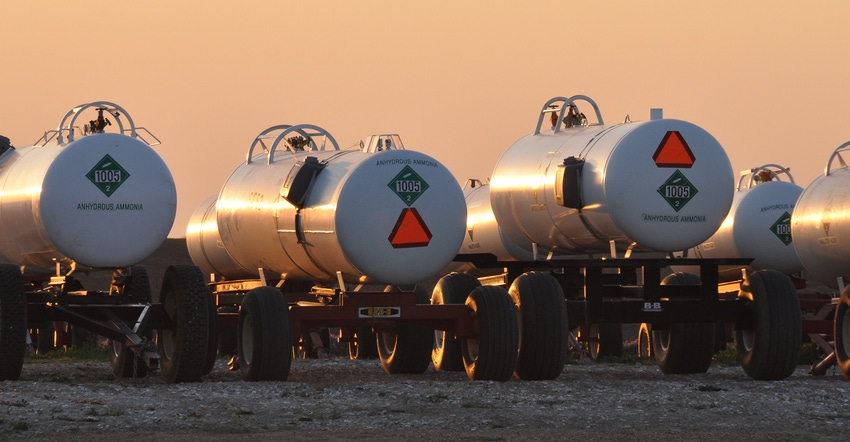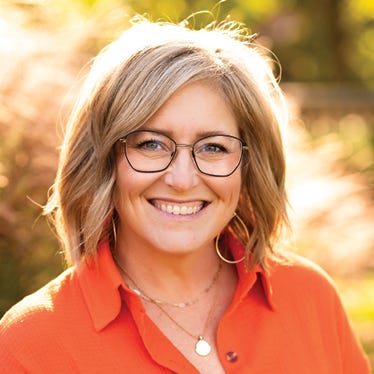
From top to bottom in the fertilizer supply chain, the COVID-19 message is the same: Supply is good. Inventories are good. Let’s not get sick.
Brian Waddell, sales and procurement manager for Harbrand, which supplies fertilizer to a network of 15 retail locations in central Illinois, says he’s not concerned about spring fertilizer supply because distributors and retailers started positioning for spring 2020 back in late-summer 2019. They’re stocked and ready to roll.
“Our biggest concern is whether we can keep our employees healthy for the next 90 days,” he says, adding their average retail fertilizer plant has 10 full-time employees and services 40,000 acres. That means they don’t have a wave of backup people poised to work if folks get sick or quarantined.
Like a lot of companies, Harbrand is communicating the need to limit unnecessary foot traffic. They’re restricting third-party access and, in some cases, gently disbanding the informal coffee shops that used to meet every morning in their retail facilities.
“It sounds kind of silly, but we have a lot of coffee clubs at 6:30 or 7 a.m., and the average age is 70. It’s tough to put a manager in charge of saying, ‘We’re closed, but it’s not about you — it’s about protecting our employees for the next 90 days,’” Waddell says.
That’s the message from both Nutrien Ag Solutions and The Mosaic Company, too.
Distribution lifeline
Jeff Tarsi, vice president of North American operations for Nutrien Ag Solutions, says the company is carefully protecting its 20-plus distribution centers nationwide, not allowing anyone but core employees in. They’ve instituted a strict protocol for drivers moving from branch to branch to reduce contact, and they’re using photos instead of signatures.
“They’re our lifeline,” he says of the distribution centers. “We don’t even allow a third party to get out of their vehicle.”
Tarsi says the guidelines are in place to keep their people and their growers safe and healthy. Nutrien Ag Solutions operates about 900 retail centers in the U.S., with many in the Midwest and up and down the Mississippi River. About half of their distribution centers are in the Midwest, and they sell a lot of wholesale product in the region. Nutrien Ag Solutions launched a digital platform two years ago that lets everyone from customers to company agronomists order product from their phones; use of that platform has picked up sharply over the past two weeks.
Beyond facility employees, Tarsi is concerned about truckers. “Most of this product is getting trucked, whether we move it straight off one of our terminals on the river out to the farm, or we move from a terminal to a retail center, or from a retail center out to a farm — that involves trucks.”
Given that a lot of food-service industries are closed, Tarsi believes there’s a decent pool of drivers available. Still, he doesn’t want truck drivers to get sick.
“What I go to bed worried about and wake up worried about is keeping our people healthy and well,” he adds. “Our people show up faithfully and loyally to keep this food chain going.”
Add applicators to that list of concerns, says Tom Fry at Mosaic. Fry is director of performance products, and while he says farmers don’t need to worry about fertilizer supply, the biggest risk factor he sees is availability of people in a particular location if an outbreak or quarantine should occur — both truckers and applicators.
“On the macrofertilizer level, there’s absolutely nothing on our radar screen,” Fry says. “But those individual situations that are impossible to predict? Those could cause delays for farmers.”
Fertilizer supply?
Mosaic is the largest producer of phosphate (P) and potash (K) in the world, and about half of its total products are sold in North America. Mosaic and Nutrien together produce and sell about 80% of the total potash that’s used in North America, which creates stability in pricing and supply for North American farmers.
Fry says Mosaic has yet to see any impact to operations or supply chain due to COVID-19, and they’ve been aggressive to keep people safe on the job. The potential bottlenecks he sees have less to do with the virus and more to do with normal spring timing — say, for example, if everyone from Mississippi to Winnipeg starts running at the same time. That type of scenario favors larger warehouse retailers, which require fewer turns for resupply. Retailers with smaller warehouses will rely on more just-in-time shipments.
Right now, fertilizer prices are, in the words of fertilizer producers, “a good value.” Neither Fry nor Tarsi sees much price movement in the coming months, though both expect the normal slight price increase that happens in-season as demand spikes.
“I don’t see a big tail off or spike coming by summer,” Fry says.
He points to China’s Hubei province, which produces about 40% of China’s MAP and DAP. Temporary disruptions there due to the coronavirus shortened supply and, in turn, created more domestic demand for those products in China. Very little of that product is ever exported to the U.S., so it didn’t affect supply and demand here, but it did bring phosphate prices up a little.
“We were a bit oversupplied on phosphates in the near term, and this helped rebalance world supply and demand,” Fry explains.
He says his biggest concerns, however, are not about business. Rather, it’s how to help communities, families and coworkers. And he’s optimistic there will be good come from COVID-19.
“I think one of the things that will come out of COVID-19 is a greater understanding of where food comes from and the role that the American farmer plays in providing an abundant and inexpensive food supply,” Fry says. “Outside of agriculture, it’s something that is kind of taken for granted.
“As a country, as a society, as a global population, we’re counting on American agriculture to help keep a stable food supply well into the future.”
About the Author(s)
You May Also Like






